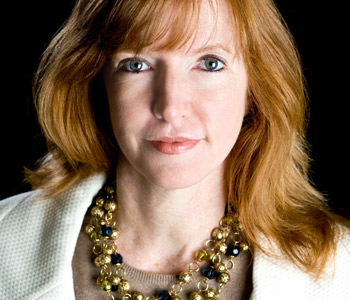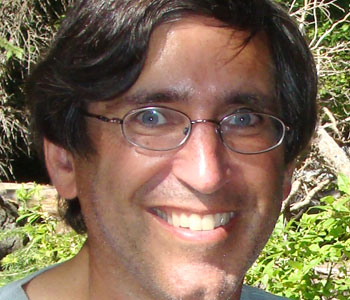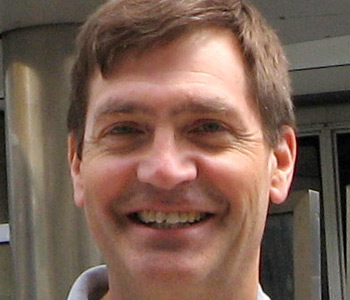David Livingstone Smith
Making Monsters: The Uncanny Power of Dehumanization
Harvard University Press
352 pages, 5 1/2 x 8 1/4 inches
ISBN 9780674545564
Making Monsters is about the phenomenon of dehumanization, a phenomenon that is implicated in the most hideous acts that human beings have inflicted upon one another. Perpetrators of mass violence often dehumanize their victims. They think of them as less-than-human entities that must be oppressed, enslaved, or even exterminated.
The term “dehumanization” is used in many different ways. Some use it as just another term for inhumane or degrading treatment. Others think of it as something verbal: the metaphorical likening of others to nonhuman animals. Still others think that when we dehumanize others, we picture them as mindless, inanimate objects. Making Monsters makes the case that these conceptions of dehumanization are unsatisfactory, and that dehumanization should be understood as the attitude of regarding others as subhuman creatures. It is a very particular phenomenon that needs to be distinguished from other, related attitudes such as racism, misogyny, ableism, xenophobia, and transphobia.
Making Monsters is the third book that I have about dehumanization, and offers my most detailed and sophisticated treatment of this topic. Using historical examples, such as the Holocaust and anti-Black violence in the United States, it gives an account both of what dehumanization is and how it works, both psychologically and politically.
Making Monsters focuses on the transformation of dehumanized people in the eyes of their persecutors not simply as animals such as rats, cockroaches, and lice, but as monstrous or demonic beings—an issue that is neglected in the social psychological literature. In my view, this occurs because when people are dehumanized, they are seen as human and as subhuman simultaneously. For example, perpetrators of the Holocaust genocide did not regard their victims simply as vermin, but conceived of them as human vermin, monstrous, uncanny fusions of rats and human beings. I argue that it is part of our legacy as ultrasocial primates that we automatically perceive others as fellow human beings. However, we are also inclined to defer to people in positions of power and authority who tell us that these others are not really human, but only appear to be human. They are, so to speak, counterfeit human beings. This leaves us with two contradictory representations of the other as wholly human and wholly subhuman, the superimposition of which transforms them into monsters.
I wrote Making Monsters to be accessible and engaging to the general reader, while also packing a strong academic punch. I wrote the book this way because I believe that dehumanization is too serious a problem to be left to the putative experts. It should be of concern to all of us, and it is up to all of us to do something about.
In 2006, I was researching wartime propaganda and was struck by the extent to which enemies are represented as less-than-human creatures. Turning to the relevant research literature, I discovered that virtually all of it was in social psychology. The existing psychological accounts seemed unsatisfactory to me, so I decided to undertake an ambitious research project of clarifying what dehumanization is, reconsidering its psychological dynamics, and tracing the history of the concept from ancient times to the present. This resulted in my 2011 book Less Than Human, and I have been working on this subject ever since. Of course, my views changed over time, as my research progressed between then and now. Making Monsters is the most comprehensive statement of my current position (see also its predecessor On Inhumanity: Dehumanization and How to Resist It, published by Oxford University Press in 2020).
Making Monsters offers an analysis of the forces, both psychological and social, that contribute to acts of mass atrocity. On the psychological side, it draws on the rich empirical literature on “psychological essentialism”—the tendency to attribute unobservable properties or “essences” to living things that define the kinds of entities that they are. Essentialism is crucial for explaining how dehumanization works, because when people dehumanize others, they grant that these others have a human appearance, but deny that they possess a human essence.
To make sense of dehumanization, one must also consider hierarchical thinking—the idea that there are “higher” and “lower” kinds of being. Making Monsters describes and criticizes work by historians of ideas, and argues that the idea of a Great Chain of Being is more than an historical artefact, and that it is firmly anchored in our moral psychology. Neither essentialism nor hierarchical thinking comport with a scientific picture of the world, but they are immensely powerful cognitive biases that can have devastating social consequences.
Digging into the history of dehumanization, it becomes obvious that ideas about dehumanization are bound up with ideas about race. The process of racialization—of coming to regard a group of people as essentially different from and inherently inferior to “us”—is often a precursor to those people’s dehumanization. Making Monsters devotes a lot of attention to the notion of race. Drawing on history, literature, psychology, and genetics, it explains what it is about our psychology and its ideological background that accounts for the persistence of beliefs about race, even though biological science has shown them to be vacuous.
Making sense of what goes on when we dehumanize others requires a theory of what it is to classify others as human. We need to understand exactly what is being denied when people deny others’ humanness. It turns out that “human” is not a biological category. It is not reducible to Homo sapiens or any other bio-taxonomic group. Instead, it is a political category. To regard someone (or more often, some group of people) as human is to regard them as belonging by their very nature to “our kind,” and to divest them of humanness is to conceive of them as categorically and essentially other. Dehumanization is thus an act of radical disidentification.
Making Monsters also draws on many other resources including work on the psychology of the uncanny, anthropological insights into the transgression of “natural” categories, and the aesthetics of horror fiction. Because dehumanization has a strong ideological component, the book also presents a novel theory of ideology that is modelled on the Darwinian theory of natural selection.
Some scholars deny that dehumanization really exists. They hold that although it might seem that some people regard others as less than human, this is not actually the case. These skeptics claim that ostensibly dehumanizing language is merely a way of devaluing, degrading, or humiliating others. Making Monsters points out the flaws in these arguments, and shows that however bizarre dehumanizing beliefs might seem, they are all too real.
If you, the reader, were thumbing through Making Monsters in a bookstore, I hope that you would first glance at the preface, which begins with the testimony of a man who was a perpetrator in the 1994 Rwanda genocide. He reported that during the genocide, he and his fellow genocidaires literally did not consider the Tutsis whom they hacked to death as human beings. “I cannot explain it.” he said, “The only answer I can give is that it was like being in a fog, something like a darkness.”
After the Preface, it would be great if you flip forward a few pages to read the account of the lynching of Henry Smith, a cognitively disabled Black man who was murdered by a White mob in 1893. Like many other Black men, Smith was tortured before being killed. Red-hot pokers were moved up and down his body, and his eyes were burned out. Then he was placed on a mound of cotton husks and slowly burned to death, as thousands of spectators looked on. And once the flames died down and what was left of his body cooled, members of the crowd pressed in to acquire pieces of Smith’s charred corpse as souvenirs. Many lynchings of Black men were large, festive events like this, that were openly advertised and covered by the media of the day. They were sometimes even referred to as “barbecues.” Reading a bit further, the bookstore browser will see that the press often described these men as vicious, subhuman beasts—as monsters, brutes, and fiends.
The Holocaust has become almost synonymous with exterminationist dehumanization. However, many people are unaware that Nazi ideology often represented Jewish people as literally demonic, and that Nazis believed that they were engaged in a life-and-death struggle with these Untermenschen (subhumans). So, I would love you to turn to page 39, and learn that Hitler claimed, “The Jews are undoubtedly a race, but not human….” and then gander at Chapter Ten, which surveys the dehumanization of European Jews from the Middle Ages to the Third Reich and beyond.
I would like you to start with these segments, because they succinctly drive home the reality of dehumanization and its terrible consequences, and will hopefully make you want to engage more deeply with the book.
As is evident from everything that I have said, dehumanization is an immensely destructive force. At any given moment, including the moment that I am writing these words and you are reading them, there is some place in the world where dehumanizing rhetoric is fanning the flames of violence. It is easy to imagine that you are not vulnerable to such rhetoric, and that if you had been a German citizen in 1942 or a Rwandan Hutu in 1994, you would not have supported much less perpetrated atrocities. If you think this, I hope that reading Making Monsters will cause you to revise your views. The psychological dispositions that underpin dehumanization are pervasive and powerful, and none of us should assume that we are immune to them.
The looming threat of catastrophic climate change makes understanding dehumanization especially urgent. There is no doubt that global warming will have huge social and political consequences. There will be vast numbers of people seeking refuge as areas of the world become uninhabitable for them. The gap between haves and have-nots will widen precipitously, infrastructures will collapse and centers of power will shift. These conditions are a perfect storm for the proliferation of the most dangerous kinds of dehumanizing beliefs, and the horrific acts that so often flow from them.




We don't put paywalls. We don't distract you with ads. We don't sell your data.
Please help to keep this running!